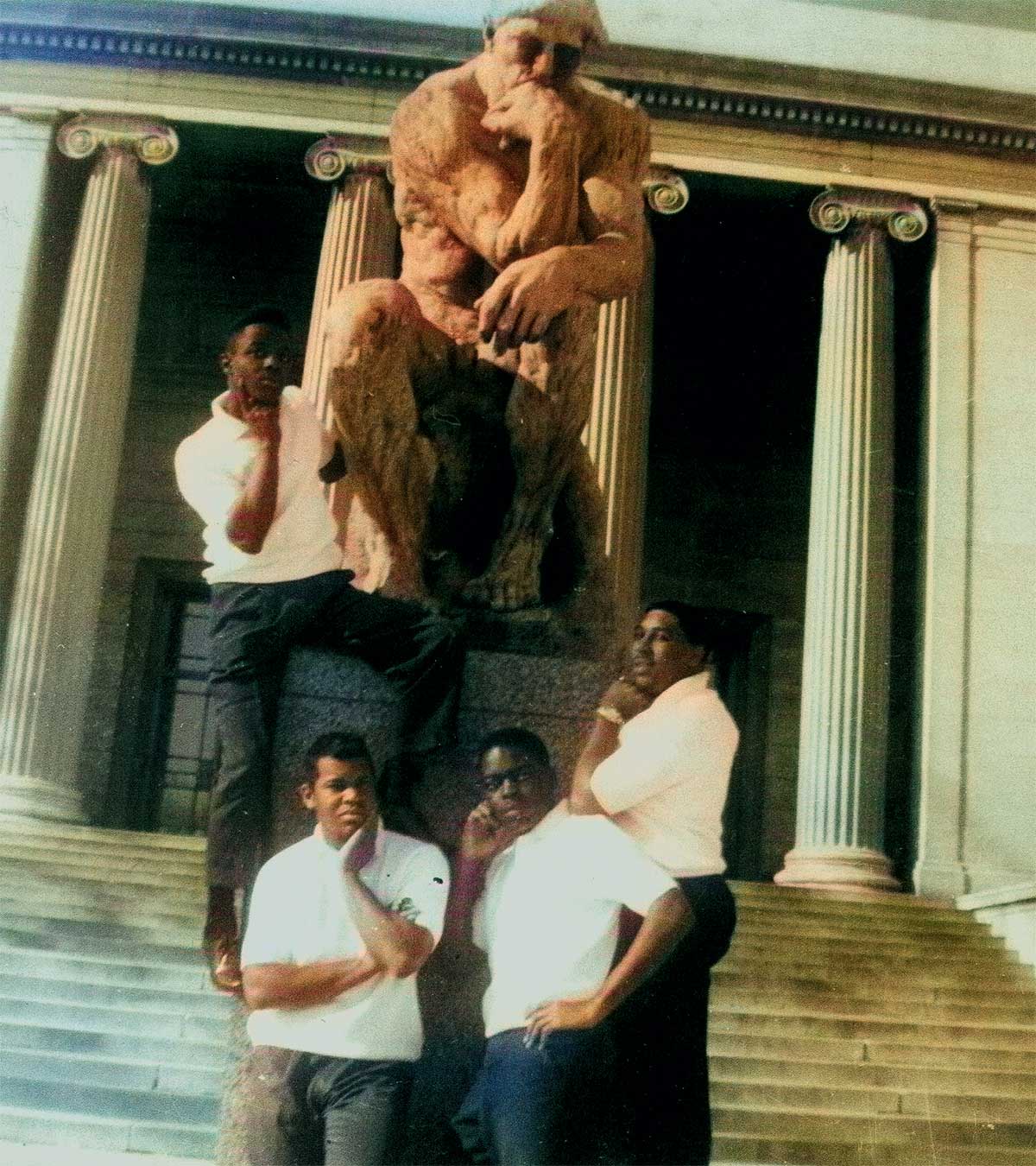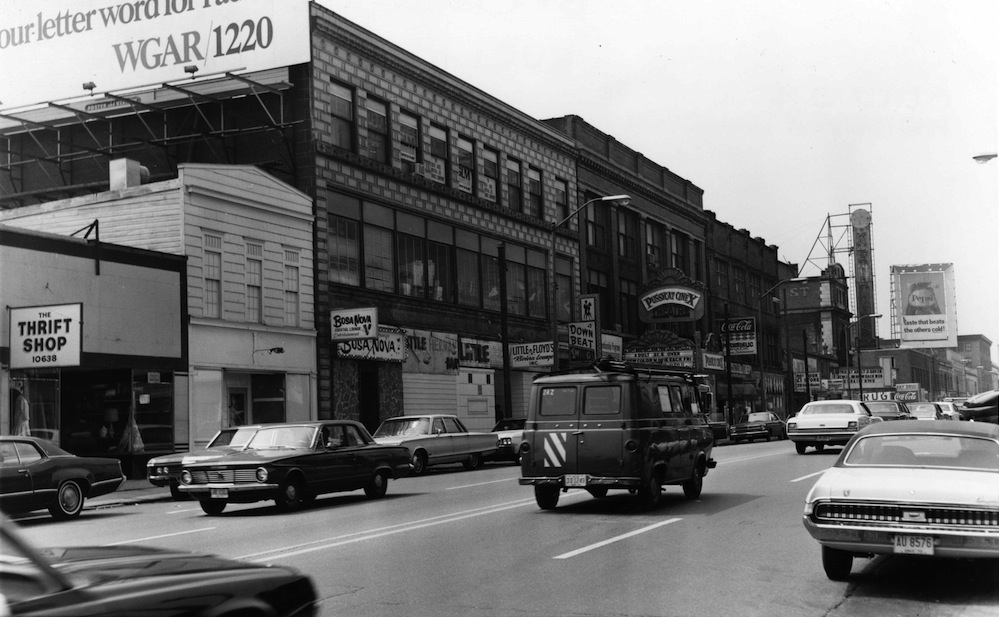
Invisible Soul is available for purchase through PayPal!


Jazz fans point to Beale Street in Memphis, 18th and Vine in Kansas City, and New York’s 52nd Street as wellsprings of a unique musical style and approach. Cleveland has no one thoroughfare to turn to for its brand of soul music. Rather, it has something much more diffuse and more difficult to pin down: a large area on the city’s East Side known as 105, its Ground Zero, the intersection of East 105th Street and Euclid Avenue. Civic boosters tout “the land” as shorthand for the city. 105—say it loud: One-oh-five—is another signifier. At one point a lifetime ago, one-oh-five seemed like “the land” unto itself. With few guideposts to show the way, one-oh-five was something I had to discover and explore on my own.
Title: Invisible Soul
Authors: Carlo Wolff and James O’Hare
Foreword: Mark David Ribbins
Illustrator: Ron Hill
Genre: R&B, Cleveland, Music
ISBN: 978-1-7331795-5-3
Format: 9” x 9” Paperback
Publication Date: June 2023
Pages: 128
Price: $19.95
Title: Invisible Soul
Authors: Carlo Wolff and James O’Hare
Foreword: Mark David Ribbins
Illustrator: Ron Hill
Genre: R&B, Cleveland, Music
ISBN: 978-1-7331795-5-3
Format: 9” x 9” Paperback
Publication Date: June 2023
Pages: 128
Price: $19.95

Jazz fans point to Beale Street in Memphis, 18th and Vine in Kansas City, and New York’s 52nd Street as wellsprings of a unique musical style and approach. Cleveland has no one thoroughfare to turn to for its brand of soul music. Rather, it has something much more diffuse and more difficult to pin down: a large area on the city’s East Side known as 105, its Ground Zero, the intersection of East 105th Street and Euclid Avenue. Civic boosters tout “the land” as shorthand for the city. 105—say it loud: One-oh-five—is another signifier. At one point a lifetime ago, one-oh-five seemed like “the land” unto itself. With few guideposts to show the way, one-oh-five was something I had to discover and explore on my own.
Part of the mission of this book is to begin to set the record straight by telling a Black story shot through with white participation. It’s as much about race as it is about music. It’s about a period 40 to 70 years ago when the call for civil rights, for an end to economic inequality, and for Black power tore cities apart—and at the same time gave rise to music of lasting expressiveness and groove.
Blacks tuned into songs by artists who recorded on a gang of local labels and major labels such as Motown, Stax, Volt, Atlantic and Philadelphia International. In the ’60s and into the ’70s, Motown hitmakers in particular appealed to Black and white alike.
Soul music was the soundtrack for civil rights. It was the voice of protest and freedom, too, from Marvin Gaye’s “Inner City Blues (Make Me Wanna Holler)” to the Temptations’ “Papa Was a Rolling Stone,” the Impressions’ “People Get Ready,” and “Respect,” a defiant Otis Redding hit that Aretha Franklin covered even more successfully. In confronting social issues, soul music presented a reality rarely touched on by mainstream rock.
I love soul music. And even though I despair about today’s circumstances —political polarization, climate crises, violence, economic inequality, intransigence over gender —I count on soul music from back in the day as a restorative.
A Soundtrack of Invisible Soul
Between 1958 and 1993, Thomas and Louise Boddie (pronounced Bo-dee) maintained Boddie Recording Company, the longest-running studio, pressing plant or label group in the history of Cleveland. Here are just a few cuts from the nearly 300 albums and 45s from that creative studio on Cleveland’s East side.
Soul Kitchen Label, by Boddie:
Angel Alexander & J.D. Saddler, Spoilin’ For A Fight
Creations Unlimited, Chrystal Illusion
Frankie Pighee & The Soulettes, If You Don’t Think That I Love You
Other Studios:
Lou Ragland, I Can’t Take It
Here then are stories centered on the Black music scene in a Cleveland that was more neighborhoods than institutions, when its other downtown, centered around East 105th Street, had a significant personality, character, purpose, pleasures and pains. In the early to mid-1960s, I’m told by those remaining few who worked and played there, 105 was so alive there was hardly time to blink.
Whether full-blown chapters or brief, amusing anecdotes, think of these as tiles in a mosaic still in assembly. Stories of sweaty, electric times and places decades ago make me wish I’d been there, and I’m eager to present glimpses of a period when fissures that continue to deepen began to crack segregation. That story is complex and by no means complete. Some might say that as a white man attempting to tell a Black story, my efforts are presumptuous, yet another manifestation of cultural colonialism. Rest assured: this book aims to enlighten, heal—and bring closure to my crying Wolff.

Got any pictures, videos or any other media of the Cleveland soul scene and want it to be featured in future editions of our book?

Carlo Wolff writes about popular culture, music, books, hospitality and travel. A contributor to the jazz magazine, DownBeat, he is the author of Cleveland Rock & Roll Memories, lead author of Mike Belkin: Socks, Sports, Rock and Art, and co-writer of Designing Victory and The Encyclopedia of Record Producers. Wolff also reports and edits for newspapers and magazines. A native of Dallas, Wolff grew up in Columbus, Ohio and attended schools in the Boston area. He moved to Cleveland in 1986. Wolff lives in Cleveland with his wife Karen Sandstrom and Daisy the Dog.
James O’Hare is a multi-modal media producer. O’Hare’s background in editing, corporate branding, and communications technology is key to bringing new approaches to storytellers and audiences. A lifelong Cleveland area resident, Jim lives in Cleveland Heights with his wife, Joyce.
 Ron Hill is a cartoonist, illustrator, caricature artist, creative director, author, editor and educator. He creates weekly editorial cartoons for four award-winning Cleveland-area, weekly newspapers since 1999. In 2008, his work earned a Cleveland Press Club award for Best Editorial Cartoon in Ohio. He is a member of the American Association of Editorial Cartoonists.
Ron Hill is a cartoonist, illustrator, caricature artist, creative director, author, editor and educator. He creates weekly editorial cartoons for four award-winning Cleveland-area, weekly newspapers since 1999. In 2008, his work earned a Cleveland Press Club award for Best Editorial Cartoon in Ohio. He is a member of the American Association of Editorial Cartoonists.
Part of the mission of this book is to begin to set the record straight by telling a Black story shot through with white participation. It’s as much about race as it is about music. It’s about a period 40 to 70 years ago when the call for civil rights, for an end to economic inequality, and for Black power tore cities apart—and at the same time gave rise to music of lasting expressiveness and groove.
Blacks tuned into songs by artists who recorded on a gang of local labels and major labels such as Motown, Stax, Volt, Atlantic and Philadelphia International. In the ’60s and into the ’70s, Motown hitmakers in particular appealed to Black and white alike.
Soul music was the soundtrack for civil rights. It was the voice of protest and freedom, too, from Marvin Gaye’s “Inner City Blues (Make Me Wanna Holler)” to the Temptations’ “Papa Was a Rolling Stone,” the Impressions’ “People Get Ready,” and “Respect,” a defiant Otis Redding hit that Aretha Franklin covered even more successfully. In confronting social issues, soul music presented a reality rarely touched on by mainstream rock.
I love soul music. And even though I despair about today’s circumstances —political polarization, climate crises, violence, economic inequality, intransigence over gender —I count on soul music from back in the day as a restorative.
A Soundtrack of Invisible Soul
Between 1958 and 1993, Thomas and Louise Boddie (pronounced Bo-dee) maintained Boddie Recording Company, the longest-running studio, pressing plant or label group in the history of Cleveland. Here are just a few cuts from the nearly 300 albums and 45s from that creative studio on Cleveland’s East side.
Soul Kitchen Label, by Boddie:
Angel Alexander & J.D. Saddler, Spoilin’ For A Fight
Creations Unlimited, Chrystal Illusion
Frankie Pighee & The Soulettes, If You Don’t Think That I Love You
Other Studios:
Lou Ragland, I Can’t Take It
Here then are stories centered on the Black music scene in a Cleveland that was more neighborhoods than institutions, when its other downtown, centered around East 105th Street, had a significant personality, character, purpose, pleasures and pains. In the early to mid-1960s, I’m told by those remaining few who worked and played there, 105 was so alive there was hardly time to blink.
Whether full-blown chapters or brief, amusing anecdotes, think of these as tiles in a mosaic still in assembly. Stories of sweaty, electric times and places decades ago make me wish I’d been there, and I’m eager to present glimpses of a period when fissures that continue to deepen began to crack segregation. That story is complex and by no means complete. Some might say that as a white man attempting to tell a Black story, my efforts are presumptuous, yet another manifestation of cultural colonialism. Rest assured: this book aims to enlighten, heal—and bring closure to my crying Wolff.
Got any pictures, videos or any other media of the Cleveland soul scene and want it to be featured in future editions of our book?

Carlo Wolff writes about popular culture, music, books, hospitality and travel. A contributor to the jazz magazine, DownBeat, he is the author of Cleveland Rock & Roll Memories, lead author of Mike Belkin: Socks, Sports, Rock and Art, and co-writer of Designing Victory and The Encyclopedia of Record Producers. Wolff also reports and edits for newspapers and magazines. A native of Dallas, Wolff grew up in Columbus, Ohio and attended schools in the Boston area. He moved to Cleveland in 1986. Wolff lives in Cleveland with his wife Karen Sandstrom and Daisy the Dog.
James O’Hare is a multi-modal media producer. O’Hare’s background in editing, corporate branding, and communications technology is key to bringing new approaches to storytellers and audiences. A lifelong Cleveland area resident, Jim lives in Cleveland Heights with his wife, Joyce.
 Ron Hill is a cartoonist, illustrator, caricature artist, creative director, author, editor and educator. He creates weekly editorial cartoons for four award-winning Cleveland-area, weekly newspapers since 1999. In 2008, his work earned a Cleveland Press Club award for Best Editorial Cartoon in Ohio. He is a member of the American Association of Editorial Cartoonists.
Ron Hill is a cartoonist, illustrator, caricature artist, creative director, author, editor and educator. He creates weekly editorial cartoons for four award-winning Cleveland-area, weekly newspapers since 1999. In 2008, his work earned a Cleveland Press Club award for Best Editorial Cartoon in Ohio. He is a member of the American Association of Editorial Cartoonists.
